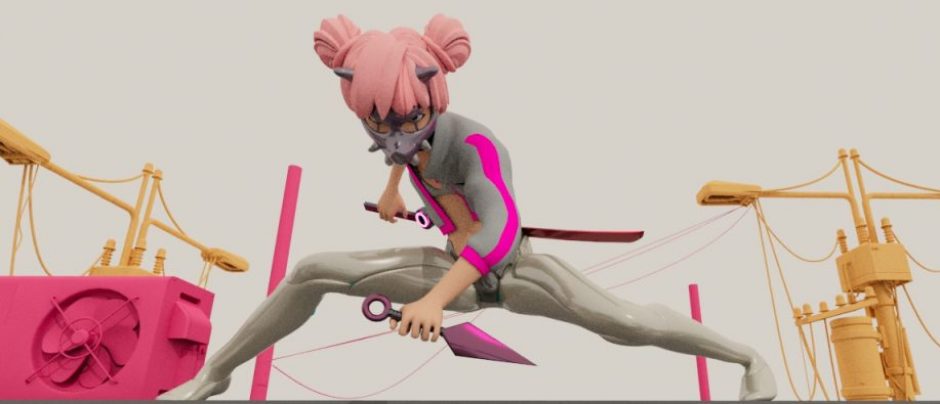Previs
Previs refers to the use of different production methods to present characters, plots, and environments in an intuitive form before the filming or production of movies (not only movies). This is a way of visual expression and execution of art and creativity. This way is diverse, because there are different production points and methods for different project requirements.
Usually the rehearsal is to simplify the production standards of each link of the traditional 3D process, using low-precision models, rough character movements, more accurate camera scheduling, simple lighting, special effects, more accurate editing, making the movie once, focusing on the production of those difficult to shoot Large, high-cost shots and scenes in order to provide more accurate production data and shooting plans to reduce production costs; after Previs was produced, it was actually the first demonstration of the comprehensive performance of each link. The link will be improved on the basis of Previs at this stage until it is clear (according to the cycle). According to different production requirements, the focus is also different, and the level of detail varies according to the different production stages. Some of the Previs videos I have compiled and released before are very detailed and accurate, and some have only rough scheduling. This is related to project requirements and production stages.
Postvis
After the actual shooting content is completed, all related assets are produced and synthesized according to the actual shooting content, and the rough iterative special effects in the lens are added. After the effect is presented, the director will determine whether it meets his intentions and cooperate with the post-production for special effects production .
Techvis
Technical Previsualization. This is how to actually shoot some of the shots determined in the Previs stage after the Previs was determined in the previous stage. Of course, it is mainly aimed at the difficult and costly shots and scenes to help shooting and post-production. Specify the data standard at the time; (scene size, layout, blue and green cloth; what is the camera used, how to move, whether it needs auxiliary equipment, how much movement speed, what lens to use, and how much focal length; light position, intensity; where real shooting is needed, where Use virtual special effects, blasting point location, area, intensity, time point; cast and crew positions, etc.). Tech-vis has a lot less production than the above Previs, but the requirements for shooting experience and post-production experience will be very high; let the photographers know all aspects of the shooting plan to avoid unnecessary mistakes and omissions. Of course, this is explained from the production and collection of technical data.
In addition to the above three important points, there are:
Pitch Previs:which is equivalent to a sample film and a concept film is mainly aimed at investors, but also used to select directors and production suppliers. Pitch-vis is rarely seen. Because it is generally not released, usually because of the limitation of production time and cycle, Pitch-vis will not be too long and the production accuracy will not be too high.
Design Previs: Generally, directors, art directors, photography directors, visual effects or others do a general design in the stage of shooting, and in the next Previs session, this link is also refined or introduced.
On-Site Previs:this is Previs at the shooting site. In fact, this function is to work closely with Tech-vis, because many times they need to accurately measure the data of the setting part, feed it back to the team, and the team makes corrections. Tech- vis, after all, there are some unpredictable conditions in the shooting scene and the real scene; if real-time virtual camera technology is used, On-set’s responsibility is to replace the blue and green back of the shooting with the actual content of the later stage, and present the final part of the picture to the director Effect, judge whether it is necessary to make up shots, and give suggestions; On-set, based on the existing real scene, temporary real scene, how to set up the blue and green screens, monitor whether the blue and green screens meet the shooting requirements during shooting, and the later requirements; and Some data collection such as board, tracking point, HDR, color temperature, etc.; some functional scope is the same as in the later stage of the scene. On-set requires more live shooting experience and operation methods.
Rough Layout: The name in 3D animation, or directly called Layout, its responsibility is to determine the role scheduling, camera movement, the character’s own animation is produced or not produced according to the project requirements, and the lighting and special effects depend on whether the plot is promoted, and the shot Requirement production (according to project requirements); in animation, due to the particularity of its production, during the Rough Layout stage, the requirements for the character’s action design, animation rhythm, and accuracy of camera movement may be emphasized, while the requirements for lighting and special effects are reduced accordingly.
Two-dimensional Layout and three-dimensional Layout are the same, both are to determine the composition of the subject in the picture.
Final Layout: scene integration, replacement of assets, optimization and reasonable arrangement of scene resources.
In fact, whether it is Previs or Layout, it mainly uses various tools and virtual environments to generate shots and clips, so that decision-makers can directly explore art, improve creativity, plan technical solutions, save costs, and unify common wishes to achieve efficient production .
Previs is actually a streamlined three-dimensional production process, and it has to issue various reference plans within a short time. Practitioners will require a variety of skills. If the traditional plan requires too much time or cost, there must be many suggestions. A simple alternative to the ability to produce solutions. (I personally think that the perfect “Previs artist” is “director + producer + visual effects + modeler + rigging division + RD + animator + special effects division + synthesizer + editor + sound effect division + photographer + lighting division” Aggregate)
